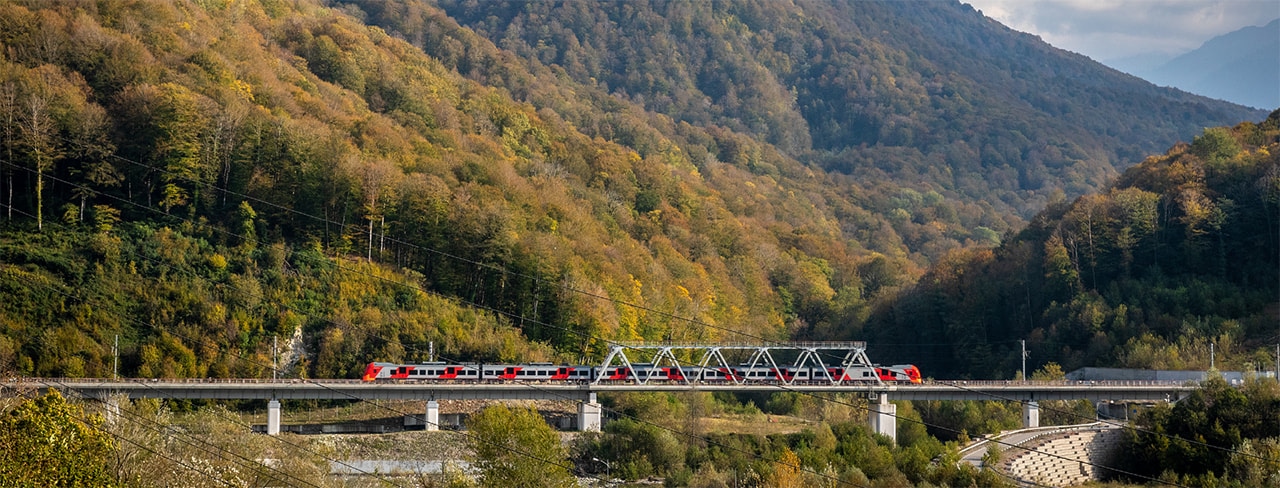Management approach
The key driver of reducing GHG emissions is the Company’s balanced development as regards energy consumption and saving.

Russian Railways’ Environmental Strategy and Energy Strategy through 2035 outline a set of measures aimed at sustainable low‑carbon development and GHG emissions reduction. Through 2035, these will enable the Company to lower the intensity of its direct and indirect GHG emissions per unit of transportation volume. To achieve this, the strategies set a specific target for reducing GHG emissions.
Upgrading the Company’s stationary thermal power infrastructure is another key focus of its decarbonisation efforts. This includes efforts in two major areas:
- enhancing energy efficiency of buildings and structures, including that of heat generation facilities, processes, and infrastructure, as well as increasing efficiency of energy resource use in stationary power generation;
- upgrading thermal power facilities by transitioning to low‑carbon fuels.
GHG emissions management, monitoring, and reporting
Russian Railways has in place and develops a system of GHG emissions monitoring, reporting and control. Since 2017, Russian Railways has been listed among state‑owned companies involved in reducing GHG emissions Approved by Instruction No. AKh-P9-5761 of the Russian Government dated 31 August 2017., making annual progress disclosures in its sustainable development reports.
GHG emissions are tracked and measured at the level of Russian Railways’ individual structural units, with the collected data further aggregated at higher levels of the Company’s corporate structure (branches and the Company overall).
In 2023, Russian Railways submitted its first‑ever statutory report on GHG emissions in line with national legislative requirements.
GHG emissions calculation methodology
In 2023, the Company calculated its GHG emissions on the basis of the Comprehensive Methodology for GHG Emissions Volume Measurement at Russian RailwaysRussian Railways’ Order No. 726/r dated 24 March 2023. developed in line with the Russian guidelines on the calculation of direct emissionsApproved by Order No. 371 of the Russian Ministry of Natural Resources and Environment dated 27 May 2022. and indirect energy‑related emissionsApproved by Order No. 330 of the Russian Ministry of Natural Resources and Environment dated 29 June 2017., as well as methodological guidelines of the Intergovernmental Panel on Climate Change (IPCC). Emissions are calculated in relation to CO2 based on data on the consumption of energy resources. This approach is permitted by both Russian regulations and methodological guidelines of the IPCC.
The methodology involves the calculation of two GHG emissions categories:
- direct emissions from stationary and transport fuel combustion sources across Russian Railways’ operations (Scope 1 under the Greenhouse Gas ProtocolGreenhouse Gas Protocol. Greenhouse Gas Protocol Corporate Accounting and Reporting Standard.);
- indirect energy‑related emissions associated with the purchase of electricity and heat by Russian Railways’ structural units from third parties (Scope 2 under the Greenhouse Gas Protocol).
Currently, the Company is implementing a system to track indirect GHG emissions associated with the purchase of construction materials, rolling stock and supplies, as well as any other goods (Scope 3 under the Greenhouse Gas Protocol).
Key ongoing measures implemented by the Company to cut GHG emissions from mobile sources:
- electrifying existing railway lines;
- developing and introducing new rolling stock;
- improving the energy efficiency of transportation operations.